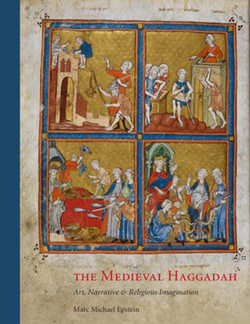
An exploration of aspects of four enigmatic, quirky, and interesting illuminated haggadot—manuscripts created for Jewish use at the home service of Passover Eve. These stunningly beautiful books include the earliest-known surviving illuminated haggadah, the Birds’ Head Haggadah, made in Mainz around 1300, in which many of the faces on the human figures depicted throughout the work are replaced with those of birds; the Golden Haggadah, from Barcelona, circa 1320-30, the iconography of which seems so indisputably “formed in the image and likeness” of contemporary manuscripts made for Christians; and two Spanish “siblings,” the Rylands Haggadah and its so-called Brother, made between 1330 and 1340, which have historically been paired because of the similarity of their iconography and style.
Rather than viewing the art in these books as merely illustrating the text or its commentaries, we will understand them as visual commentary in and of themselves not only containing midrashic details, but evincing a strong midrashic mindset. In examining these important works with fresh and creative eyes, we will propose some startling new solutions to long-unresolved questions concerning the meaning of the art contained within them. But we will also engage in analysis of this art as a springboard to addressing broader issues in the study of Jewish thought, visuality, and culture, both material and intellectual.